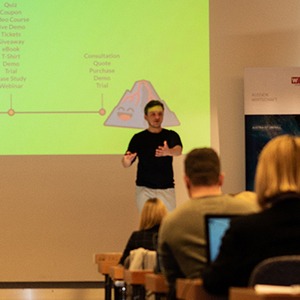Your customer acquisition cost (CAC) provides valuable insights into your organization’s marketing and sales efficiency.
By understanding how to calculate and use CAC data, you can make more informed decisions about your marketing and sales strategies.
What Is Customer Acquisition Cost (CAC)?
In plain English, a business’ customer acquisition cost (CAC) is the average amount of money a business spends to get a new customer.
This metric gives business owners a clear idea of how much they’re spending to increase their customer base. It can also be used to benchmark a company’s marketing and sales efficiency.
How To Calculate Customer Acquisition Cost (CAC)
There are a few different ways to calculate CAC, but the most common equation is:
Customer Acquisition Cost = Total Sales & Marketing Expenses ÷ Number of New Customers
For example, let’s say a business spends $5,000 on marketing and sales over the course of one month. In that same time period, they’ve got 30 new customers. This would mean that their customer acquisition cost for that month is $5,000/50, or $100.
You need to calculate your CAC over a certain period (monthly, quarterly, annually, etc.), as acquisition costs can fluctuate.
You can also use tools, such as Stripe, Baremetrics and Causal, to automatically calculate and derive insights from your CAC.
How To Track Customer Acquisition Cost (CAC)
If you only have one acquisition channel, tracking CAC is fairly easy.
Start by tracking every expense that goes into the acquisition channel over a certain period (e.g., 1 month, 3 months, yearly, etc), including:
- Marketing Salaries
- Advertising
- Promotional Materials
- Website Maintenance
- Customer Relationship Management (CRM) Software
- Lead Generation Services
At the end of the time period, divide the total expenses by the number of customers acquired during that time period. This will give you your customer acquisition cost for that month (or another time period).
If you have multiple acquisition channels, tracking CAC can be a bit more difficult. In this case, we recommend calculating a CAC for each channel and an overall CAC for the business as a whole. That way, you can see which channels are the most (and least) effective in terms of acquisition costs.
Related: How to magically acquire users with no money by Fractional CMO Saakshi Jain
How To Use Customer Acquisition Cost (CAC)
Now that you know what customer acquisition cost is and how to calculate it, you may be wondering how this information can be used to improve your business.
There are a few different ways that businesses can choose to use CAC data, but some of the most common include:
- Calculating LTV-CAC: The lifetime value to customer acquisition cost ratio (LTV:CAC) is a metric that measures the relationship between the amount of money a customer is worth to a business and the amount of money spent to acquire that customer.
- Reducing Customer Churn: Another way that businesses can use CAC data is to reduce customer churn. By tracking CAC, businesses can identify and take advantage of channels that are helping you acquire loyal high-value customers.
- Increasing Sales: Finally, businesses can use CAC data to increase sales. By understanding which acquisition channels are the most (and least) effective, businesses can invest more in the former and cut back on the latter.
Start Streamlining Your Operations
If you want to learn more about important metrics like CAC, LTV, LTV:CAC, and much, much more, why not book a call with a talented analytics mentor?
At Growth Mentor, we connect founders, CEOs, and marketers with experienced analytics mentors who can help them make data-driven decisions and streamline their operations.
Book a call today to see how we can help you grow your business!



